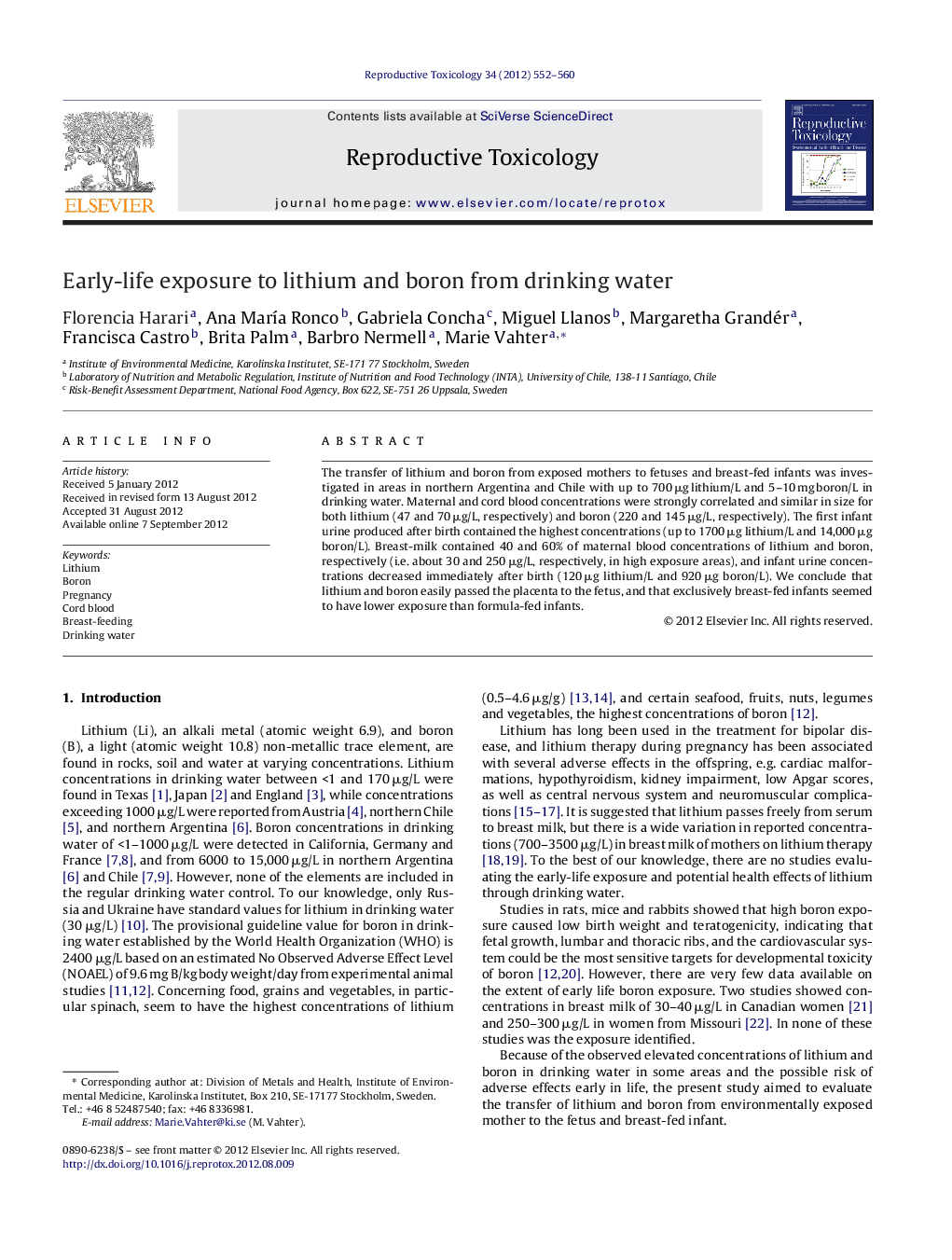| Article ID | Journal | Published Year | Pages | File Type |
|---|---|---|---|---|
| 2593870 | Reproductive Toxicology | 2012 | 9 Pages |
The transfer of lithium and boron from exposed mothers to fetuses and breast-fed infants was investigated in areas in northern Argentina and Chile with up to 700 μg lithium/L and 5–10 mg boron/L in drinking water. Maternal and cord blood concentrations were strongly correlated and similar in size for both lithium (47 and 70 μg/L, respectively) and boron (220 and 145 μg/L, respectively). The first infant urine produced after birth contained the highest concentrations (up to 1700 μg lithium/L and 14,000 μg boron/L). Breast-milk contained 40 and 60% of maternal blood concentrations of lithium and boron, respectively (i.e. about 30 and 250 μg/L, respectively, in high exposure areas), and infant urine concentrations decreased immediately after birth (120 μg lithium/L and 920 μg boron/L). We conclude that lithium and boron easily passed the placenta to the fetus, and that exclusively breast-fed infants seemed to have lower exposure than formula-fed infants.
► We studied mothers, exposed to water lithium (Li) and boron (B), and their infants. ► Elevated Li and B levels in cord blood and first infant urine suggest fetal exposure. ► Immediately after birth, urinary concentrations decreased at least three folds. ► Breast-feeding resulted in lower infant Li and B exposure than formula.
